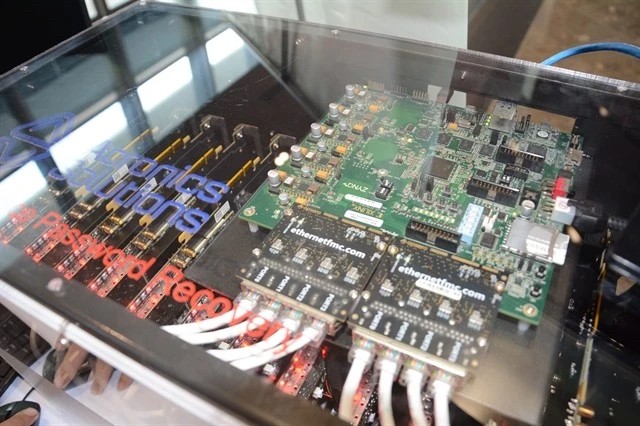Logistics costs hamstring agricultural businesses
Anyone in Hanoi craving fresh, juicy strawberries from the Central Highlands city of Da Lat shall have to pay for at least 35 per cent more than usual. But the extra money doesn’t go to farmers, but pays for costly transportation.
 |
(Photo: danviet.vn)
Pham Tuan has been a fruit merchant for years, specialising in buying fruits grown in the south and delivering them to the north for sale. He complained of rising transportation expenses which made the fruit price leap dramatically for customers.
“For example, each kg of avocado will cost an extra VND 4,000 (US 17 cents) for delivery from the south to my hometown in Hung Yen Province,” Tuan told Nong Thon Ngay Nay (Countryside Today).
“That’s exactly why the fruits bought directly at the garden are rather cheap but become terribly expensive in big cities.”
The south has long been known as Vietnam’s biggest fruit garden due to its favourable climate and geology to grow tropical fruits.
With freight trains still too slow to meet the transport timeline demand, there is only one option to transport the fruit thousands of kilometres to the capital in its freshest state possible: by air.
Veggie and fruit company Big Green director Nguyen Tien Hung admitted that transportation costs were a huge problem in the fruit business, accounting for between 15 and 30 per cent of the fruit price.
Hung said his company heavily relied on aviation transport to deliver goods to Hanoi, and that increased the fruit price greatly.
Farmers have lost out as merchants have tried to push the buying price down to cover transport expenses, while fruit sellers have also suffered a drop in sales due to the increased retail price.
Cargo transport over a short distance, mostly on roads from neighbouring provinces to big cities, is not much cheaper.
In a recent national conference on logistics, it was revealed that the price of veggies delivered from Vinh Phuc Province to Hanoi’s Cau Giay District would add VND 2,500 per kg for the transportation expense on a route of 40 km. If the veggies are to head a further east by 30 km to Gia Lam District, the cost would climb to VND 3,700.
Such an amount might seem little at first glance, but it could make the veggies ore than 50 per cent more expensive at the markets in Hanoi.
According to the World Bank, logistics expenses in Vietnam are still very high, equaling nearly 21 per cent of national GDP. The average number in Asia-Pacific was only 13.5 per cent while it was 9.2 and 8.6 per cent in Europe and North America, respectively.
The Vietnam Logistics Association estimated that fuel costs account for about 30-35 per cent of general transportation expense in Vietnam while road fees accounted for 15 per cent on the North-South route. Notably, the association also included a five per cent “tea money” figure, slang commonly known as bribes for customs officers and traffic police.
While asking the Government to tackle “tea money” to help the logistics costs has so far borne little fruit, experts also asked authorities to develop the two abandoned freight transportation sectors: railway and river way.
Vietnam’s century-old rail tracks are no longer able to transport agricultural products from the south to the north as it will take days to do so and the number of refrigerated containers is limited. The use of river way for cargo transport, meanwhile, has been neglected for years.
Agricultural expert Hoang Trong Thuy said the current transport network was yet to meet the increasing demand of cargo transport.
“Logistics is not only about a road for transportation. If we truly want to reduce the (logistics) cost, (we) have to develop in sync all parts of logistics, for example the infrastructure of wholesale markets and ports with freezer storage, to thoroughly connect the consumption area with the production one,” he said./.
VNF/VNS
Recommended
 National
National
Vietnam News Today (May 12): Party General Secretary Meets With Russian Experts, Intellectuals
 National
National
Vietnam News Today (May 11): Vietnam, Austria to Boost Cooperation in High-Tech Development, Innovation
 National
National
Vietnam News Today (May 10): Vietnamese Peacekeepers Honored with UN Medal in South Sudan
 National
National
Vietnam News Today (May 9): Vietnam Ready to Work With Russia to Elevate Relations
Popular article
 National
National
Vietnam News Today (May 8): Vietnam Remains Committed to UNCLOS
 National
National
Vietnam News Today (May 7): Vietnam Hosts Over 7.67 Million International Visitors in First 4 Months
 National
National
Vietnam News Today (May 6): Party Leader To Lam Meets Vietnamese Expatriates in Kazakhstan
 National
National



